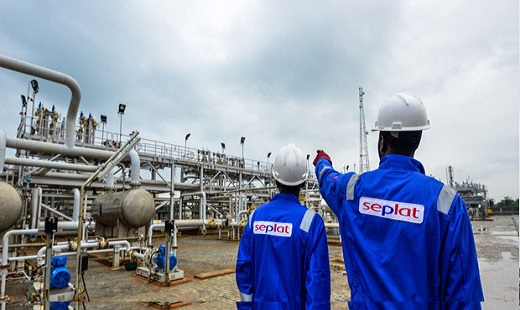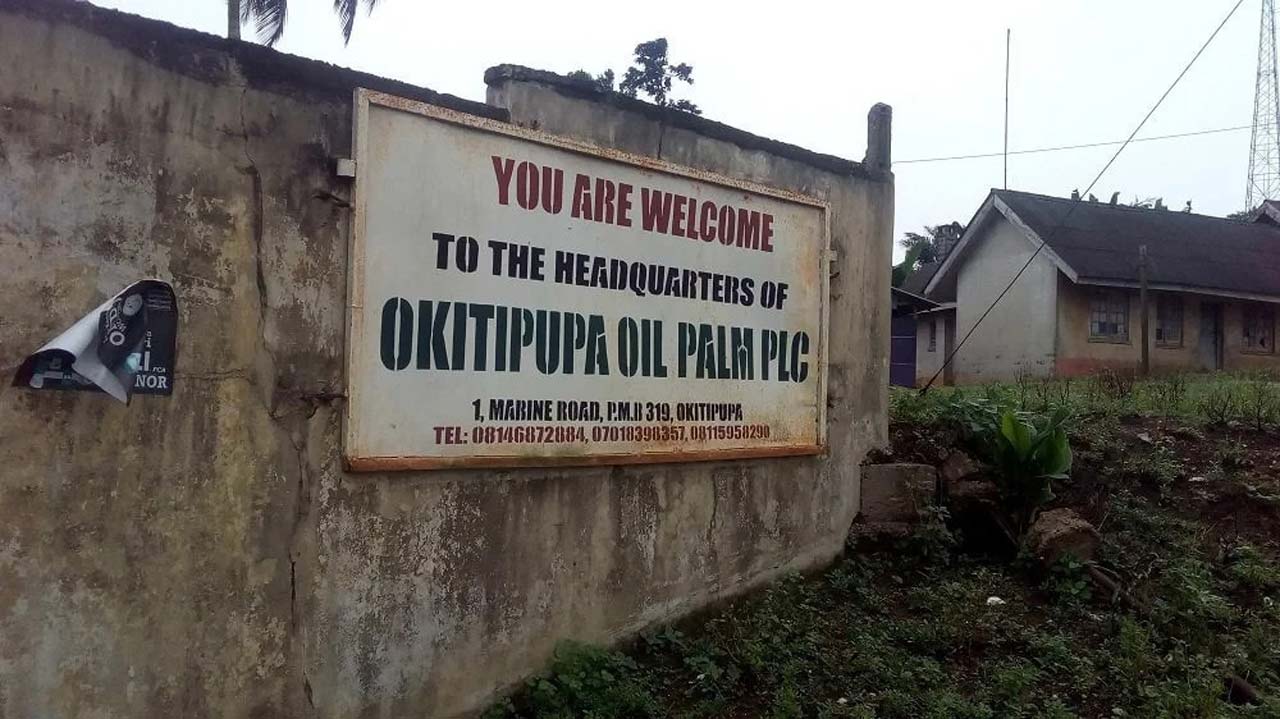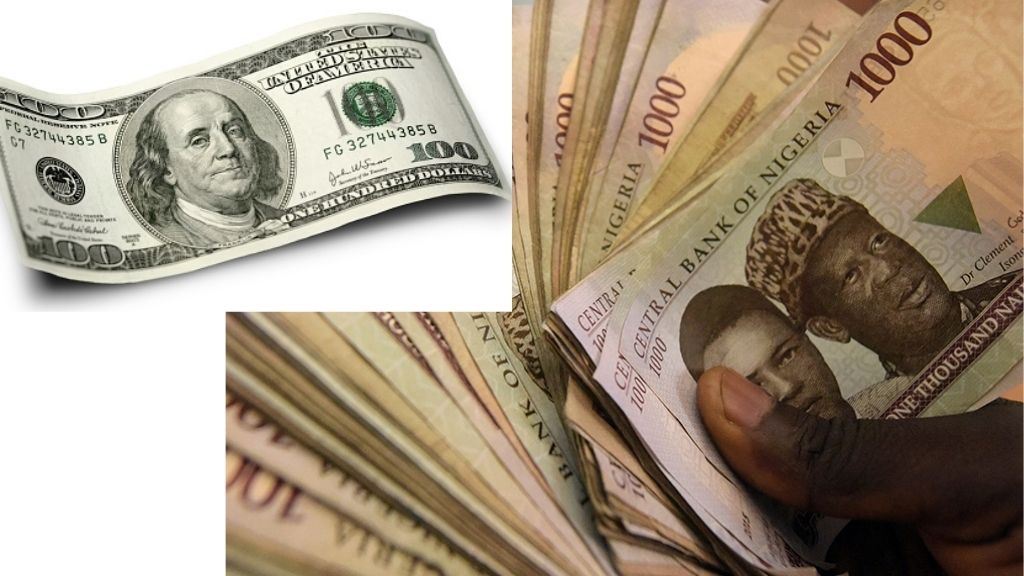Economy
Fitch Rates Seplat Proposed Dollar-Denominated Bond Issuance

By Dipo Olowookere
Last week, one of the companies listed on the Nigerian Stock Exchange (NSE), Seplat Petroleum Development Company Plc (Seplat) announced its intention to issue five or seven-year Dollar denominated bonds to foreign investors.
The notes would be issue to refinance the company’s debts, a statement signed by the oil firm had disclosed.
With investors gearing up for the exercise, one of the renowned rating agencies in the world, Fitch Ratings, has assigned expected senior unsecured ‘B-(EXP)’/’RR4(EXP)’ ratings to the proposed bond issuance.
This information was made known in a statement issued by Fitch on Wednesday, February 28, 2018, which was obtained by Business Post.
Also in the statement, Fitch assigned an expected Long-Term Issuer Default Rating (IDR) of ‘B-(EXP)’ with a Positive Outlook to Seplat.
According to the rating firm, the expected IDR assumes a successful refinancing in 2018, i.e., issuance of USD-denominated senior notes and signing of a new long-term revolving credit facility (RCF).
The assignment of a final IDR is contingent upon the successful completion of the refinancing, with terms and conditions in line with our current assumptions.
The assignment of a final rating to the notes is contingent upon receipt of final documentation substantially in line with draft documentation reviewed.
The ‘B-(EXP)’ IDR reflects Seplat’s small scale by production and reserves, concentration of onshore exploration and production (E&P) assets in Nigeria (B+/Negative), and the cash flow volatility that has been associated with its operating environment.
Specifically, between February 2016 and June 2017, Seplat’s performance was severely impacted by a militant attack and subsequent prolonged downtime at the Forcados oil pipeline and export terminal. The company also has large, albeit declining, receivables from state-owned Nigerian Petroleum Development Company (NPDC).
The force majeure was lifted in June 2017 and Seplat has been ramping up production at its main asset.
Fitch said the Positive Outlook assigned to Seplat reflects its view that the Amukpe-Escravos oil pipeline, which Seplat anticipates to be fully commissioned and operational in Q318, will somewhat mitigate cash flow volatility by providing a viable alternative export route to Seplat.
The successful completion and start of operations of the Escravos oil pipeline coupled with continued production ramp-up across Seplat’s upstream assets could result in an upgrade of the IDR to ‘B’.
Along with the post-restructuring capital structure, the rating captures Seplat’s financial profile over 2018-2020, with forecast funds from operations (FFO) net adjusted leverage expected to remain comfortably below the 3.5x negative sensitivity.
On the key rating drivers, Fitch said Seplat, as a small E&P company with onshore oil and gas assets in Nigeria, had its full year 2017 working interest (WI) production around 37 thousand barrels of oil equivalent per day (kboepd), split nearly equally between liquids and natural gas.
Its main assets are the Oil Mining Leases (OMLs) 4, 38 and 41, production at which was severely constrained in 2016-1H17 due to the closure of the Forcados oil pipeline and export terminal following an attack.
Fitch forecasts that Seplat will continue ramping up its daily oil and gas output to 68kboepd in 2021, which incorporates our conservative estimate of a 20 percent additional downtime on the management forecasts.
It also believes that even following Seplat’s expected production ramp-up in 2018-2021 it will remain a small E&P company with a significant onshore asset concentration in one country. Its WI production and reserves (end-2016 – 241mmboe of proved or 1P reserves) remain commensurate with the ‘B’ category rating for an E&P company.
Fitch said to avoid a repetition of a prolonged downtime experienced when force majeure was declared on the Forcados oil pipeline and export terminal, Seplat and the Nigerian authorities have been working on a number of security options and alternative export routes.
The Nigerian government has prioritised the completion of the 160kbopd Amukpe-Escravos oil pipeline. Seplat currently expects the pipeline to be fully commissioned and operational in 3Q18.
In addition to the Escravos pipeline, two jetties at the domestic Warri oil refinery have been upgraded to allow exports of 30kbopd gross.
However, this is a more expensive option as barging of crude is required and Seplat plans to use Escravos as the primary crude export route, supported by Forcados and the Warri refinery routes.
“We believe that these measures when fully operational should provide adequate flexible cover for Seplat’s export transportation needs, but nonetheless conservatively model additional downtime of 20% in our forecasts for 2018-2020,” the rating agency said in its report.
It noted that following the resumption of production at OLMs 4, 38 and 41 in June 2017, Seplat’s financial profile has improved materially.
“Our 2017 base case forecasts FFO at $134 million vs. negative $11 million in 2016 and FFO net adjusted leverage of 2.5x vs. 8.5x at end-2016.
“We expect that Seplat will maintain a conservative financial profile over 2018-2020, with positive free cash flow (FCF), FFO adjusted net leverage under 2.5x and interest coverage of at least 3x,” it said.
Seplat’s 2017 gas revenues of $124 million were up 18 percent year-on-year and its daily gas sales averaged 293MMscfd (gross, not WI) in 4Q17. Seplat aims to increase gas supply to the domestic Nigerian market. Its gas processing capacity stands at 525MMscfd, while current wells can deliver around 400MMscfd (gross).
Nigerian gas prices are largely de-linked from oil prices, e.g. while average realised oil prices dropped by 21 percent between 2015 and 2016, gas prices increased by 19 percent. Seplat projects a higher share of gas in its production volumes, from 50 percent in 2017 to 60 percent in 2021.
“We view positively the higher share of gas in the sales mix, as it provides a more stable source of revenues.
However, gas remains the smaller business and is projected to account for less than 25 percent of the company’s gross revenues in 2021. Gas sales are also subject to credit risks and FX risks, as USD-linked payments for gas are made in Naira,” Fitch stated.
The rating company said the senior notes and secured RCF are expected to be issued by Seplat and will benefit from pari-passu upstream guarantees from Seplat West Ltd (contributor to almost 100 percent of consolidated EBITDA in 2017), Newton Energy and Seplat East Swamp Ltd.
The RCF will further benefit from a security package including a pledge over the shares of Seplat West and Newton, thus ranking it ahead of senior notes under our recovery analysis.
The notes benefit from a standard high-yield covenant package including covenants on permitted payments, incurrence of indebtedness and issuance of preferred stock, merger, consolidation or sale of assets, investments, creation of certain liens, pari passu in right of payment, and contain no financial maintenance covenants.
On its key assumptions, Fitch said they were based on Brent price deck of $52.5/bbl in 2018, $55/bbl in 2019 and $57.5/bbl thereafter; successful renewal of licenses for OMLs 4, 38 and 41 that expire in June 2019; domestic gas prices of between $2.5/mscf and $3/mscf, in line with management forecasts; and daily oil and gas production volumes ramping up from about 37kboepd in 2017 to 68kboepd in 2021, including a 20 percent additional downtime on the management forecasts.
Other were Opex (excluding royalties) improving from about $7.5/boe in 9M17 to about $6.5/boe in 2020-2021, 20 percent more conservative than management forecasts; average capex of about $105 million in 2017-2021, in line with management forecasts; and other cash inflows and outflows as projected plus $100 million additional outflows assumed by Fitch in each 2019-2021.
On the assumptions that relate to recovery estimates, Fitch its bespoke recovery analysis considered Seplat’s value on a going-concern basis in a distressed scenario and assumed that the company would keep its operating licenses and would be restructured rather than liquidated.
Fitch also applied a 25 percent discount to the 2017 EBITDA reflecting its view of a sustainable, post-reorganisation level upon which it based the valuation of the company. The discount reflects risks associated with the oil price volatility, potential unplanned downtime and other adverse factors.
In addition, the 4.5x multiple was used to calculate a post-reorganisation enterprise value (EV), reflecting a mid-cycle multiple for oil & gas and metals & mining companies in the EMEA region. This considered that Seplat does not have any unique characteristic that would allow for a higher multiple, such as significant market share, or undervalued assets.
As per Fitch’s criteria, the new and prior ranking RCF is assumed to be fully drawn and it has also taken 10 percent off the EV to account for administrative claims.
The waterfall results in a 100 percent recovery corresponding to a ‘RR1’ Recovery Rating for the RCF. The noteholders could achieve a recovery of 70% (RR3) but are capped at ‘RR4’ (soft cap), in line with Fitch’s criteria as Seplat’s physical assets are located in Nigeria.
Fitch said it expects Seplat’s liquidity to improve post refinancing, supported by positive FCF generation and a manageable maturity profile.
Fitch-projected FCF is around $125 million in 2018 and $66 million in 2019 because as at December 31, 2017, Seplat had the equivalent of $437 million in cash.
Economy
FAAC Disburses 1.727trn to FG, States Local Councils in December 2024

By Modupe Gbadeyanka
The federal government, the 36 states of the federation and the 774 local government areas have received N1.727 trillion from the Federal Accounts Allocation Committee (FAAC) for December 2024.
The funds were disbursed to the three tiers of government from the revenue generated by the nation in November 2024.
At the December meeting of FAAC held in Abuja, it was stated that the amount distributed comprised distributable statutory revenue of N455.354 billion, distributable Value Added Tax (VAT) revenue of N585.700 billion, Electronic Money Transfer Levy (EMTL) revenue of N15.046 billion and Exchange Difference revenue of N671.392 billion.
According to a statement signed on Friday by the Director of Press and Public Relations for FAAC, Mr Bawa Mokwa, the money generated last month was about N3.143 trillion, with N103.307 billion used for cost of collection and N1.312 trillion for transfers, interventions and refunds.
It was disclosed that gross statutory revenue of N1.827 trillion was received compared with the N1.336 trillion recorded a month earlier.
The statement said gross revenue of N628.972 billion was available from VAT versus N668.291 billion in the preceding month.
The organisation stated that last month, oil and gas royalty and CET levies recorded significant increases, while excise duty, VAT, import duty, Petroleum Profit Tax (PPT), Companies Income Tax (CIT) and EMTL decreased considerably.
As for the sharing, FAAC disclosed that from the N1.727 trillion, the central government got N581.856 billion, the states received N549.792 billion, the councils took N402.553 billion, while the benefiting states got N193.291 billion as 13 per cent derivation revenue.
From the N585.700 billion VAT earnings, the national government got N87.855 billion, the states received N292.850 billion and the local councils were given N204.995 billion.
Also, from the N455.354 billion distributable statutory revenue, the federal government was given N175.690 billion, the states got N89.113 billion, the local governments had N68.702 billion, and the benefiting states received N121.849 billion as 13 per cent derivation revenue.
In addition, from the N15.046 billion EMTL revenue, FAAC shared N2.257 billion to the federal government, disbursed N7.523 billion to the states and transferred N5.266 billion to the local councils.
Further, from the N671.392 billion Exchange Difference earnings, it gave central government N316.054 billion, the states N160.306 billion, the local government areas N123.590 billion, and the oil-producing states N71.442 billion as 13 per cent derivation revenue.
Economy
Okitipupa Plc, Two Others Lift Unlisted Securities Market by 0.65%

By Adedapo Adesanya
The NASD Over-the-Counter (OTC) Securities Exchange recorded a 0.65 per cent gain on Friday, December 13, boosted by three equities admitted on the trading platform.
On the last trading session of the week, Okitipupa Plc appreciated by N2.70 to settle at N29.74 per share versus Thursday’s closing price of N27.04 per share, FrieslandCampina Wamco Nigeria Plc added N2.49 to end the session at N42.85 per unit compared with the previous day’s N40.36 per unit, and Afriland Properties Plc gained 50 Kobo to close at N16.30 per share, in contrast to the preceding session’s N15.80 per share.
Consequently, the market capitalisation added N6.89 billion to settle at N1.062 trillion compared with the preceding day’s N1.055 trillion and the NASD Unlisted Security Index (NSI) gained 19.66 points to wrap the session at 3,032.16 points compared with 3,012.50 points recorded in the previous session.
Yesterday, the volume of securities traded by investors increased by 171.6 per cent to 1.2 million units from the 447,905 units recorded a day earlier, but the value of shares traded by the market participants declined by 19.3 per cent to N2.4 million from the N3.02 million achieved a day earlier, and the number of deals went down by 14.3 per cent to 18 deals from 21 deals.
At the close of business, Geo-Fluids Plc was the most active stock by volume on a year-to-date basis with a turnover of 1.7 billion units worth N3.9 billion, followed by Okitipupa Plc with the sale of 752.2 million units valued at N7.8 billion, and Afriland Properties Plc with 297.3 million units sold for N5.3 million.
In the same vein, Aradel Holdings Plc remained the most active stock by value on a year-to-date basis with the sale of 108.7 million units for N89.2 billion, trailed by Okitipupa Plc with 752.2 million units valued at N7.8 billion, and Afriland Properties Plc with a turnover of 297.3 million units worth N5.3 billion.
Economy
Naira Trades N1,533/$1 at Official Market, N1,650/$1 at Parallel Market

By Adedapo Adesanya
The Naira appreciated further against the United States Dollar at the Nigerian Autonomous Foreign Exchange Market (NAFEM) by N1.50 or 0.09 per cent to close at N1,533.00/$1 on Friday, December 13 versus the N1,534.50/$1 it was transacted on Thursday.
The local currency has continued to benefit from the Electronic Foreign Exchange Matching System (EFEMS) introduced by the Central Bank of Nigeria (CBN) this month.
The implementation of the forex system comes with diverse implications for all segments of the financial markets that deal with FX, including the rebound in the value of the Naira across markets.
The system instantly reflects data on all FX transactions conducted in the interbank market and approved by the CBN.
Market analysts say the publication of real-time prices and buy-sell orders data from this system has lent support to the Naira in the official market and tackled speculation.
In the official market yesterday, the domestic currency improved its value against the Pound Sterling by N12.58 to wrap the session at N1,942.19/£1 compared with the previous day’s N1,954.77/£1 and against the Euro, it gained N2.44 to close at N1,612.85/€1 versus Thursday’s closing price of N1,610.41/€1.
At the black market, the Nigerian Naira appreciated against the greenback on Friday by N30 to sell for N1,650/$1 compared with the preceding session’s value of N1,680/$1.
Meanwhile, the cryptocurrency market was largely positive as investors banked on recent signals, including fresh support from US President-elect, Mr Donald Trump, as well as interest rate cuts by the European Central Bank (ECB).
Ripple (XRP) added 7.3 per cent to sell at $2.49, Binance Coin (BNB) rose by 3.5 per cent to $728.28, Cardano (ADA) expanded by 2.4 per cent to trade at $1.11, Litecoin (LTC) increased by 2.3 per cent to $122.56, Bitcoin (BTC) gained 1.9 per cent to settle at $101,766.17, Dogecoin (DOGE) jumped by 1.2 per cent to $0.4064, Solana (SOL) soared by 0.7 per cent to $226.15 and Ethereum (ETH) advanced by 0.6 per cent to $3,925.35, while the US Dollar Tether (USDT) and the US Dollar Coin (USDC) remained unchanged at $1.00 each.
-

 Feature/OPED5 years ago
Feature/OPED5 years agoDavos was Different this year
-
Travel/Tourism8 years ago
Lagos Seals Western Lodge Hotel In Ikorodu
-

 Showbiz2 years ago
Showbiz2 years agoEstranged Lover Releases Videos of Empress Njamah Bathing
-

 Banking6 years ago
Banking6 years agoSort Codes of GTBank Branches in Nigeria
-

 Economy2 years ago
Economy2 years agoSubsidy Removal: CNG at N130 Per Litre Cheaper Than Petrol—IPMAN
-

 Banking2 years ago
Banking2 years agoFirst Bank Announces Planned Downtime
-

 Sports2 years ago
Sports2 years agoHighest Paid Nigerian Footballer – How Much Do Nigerian Footballers Earn
-

 Technology4 years ago
Technology4 years agoHow To Link Your MTN, Airtel, Glo, 9mobile Lines to NIN


















